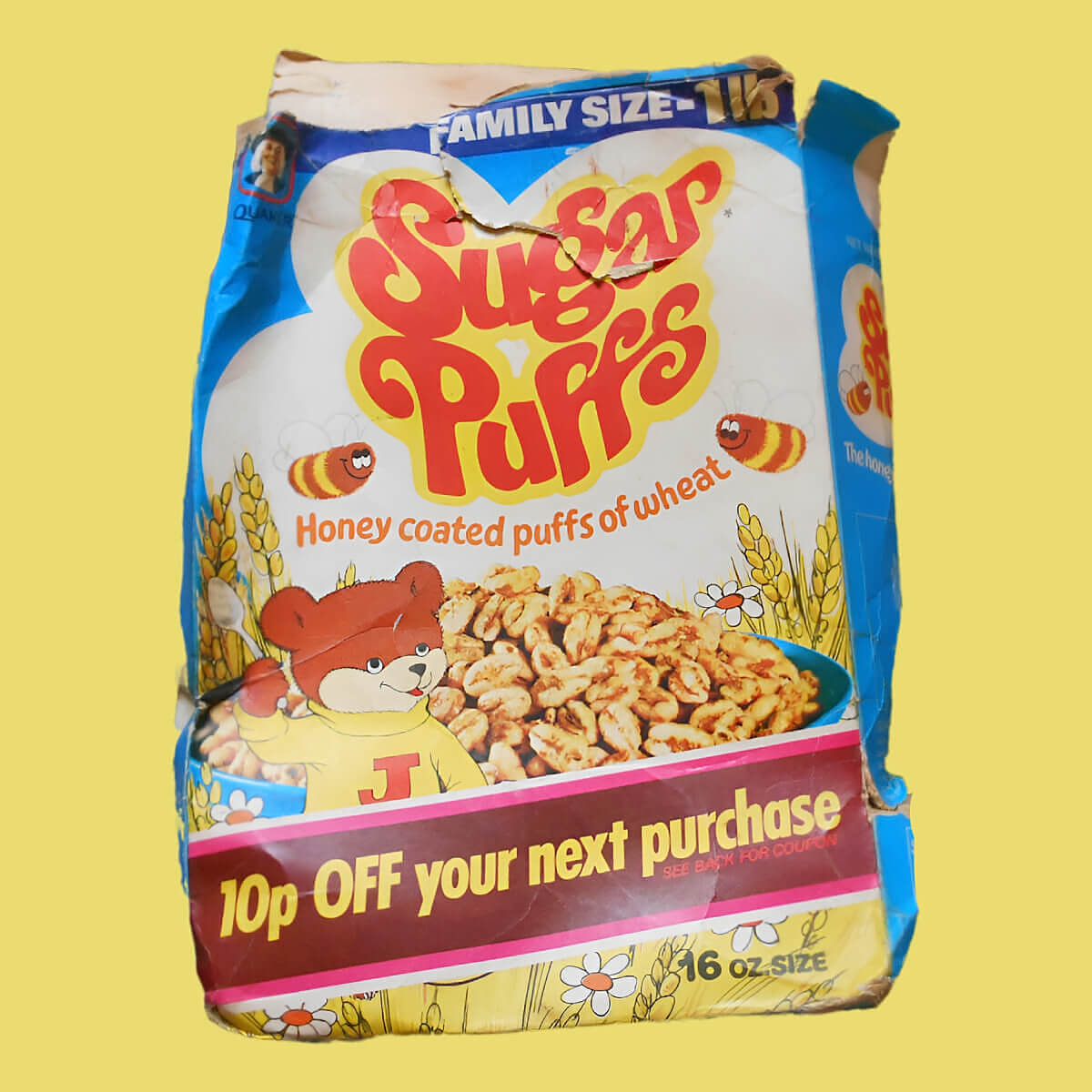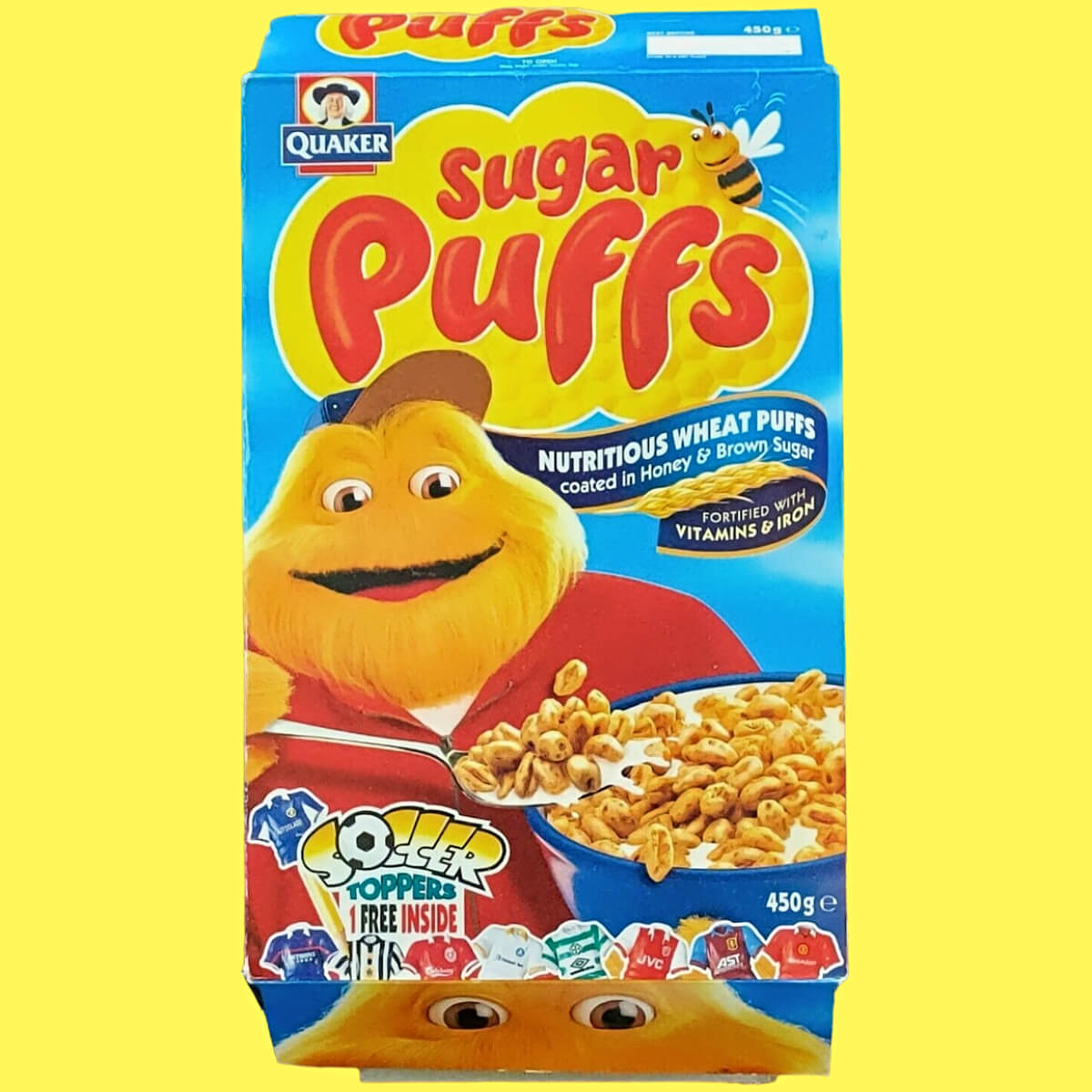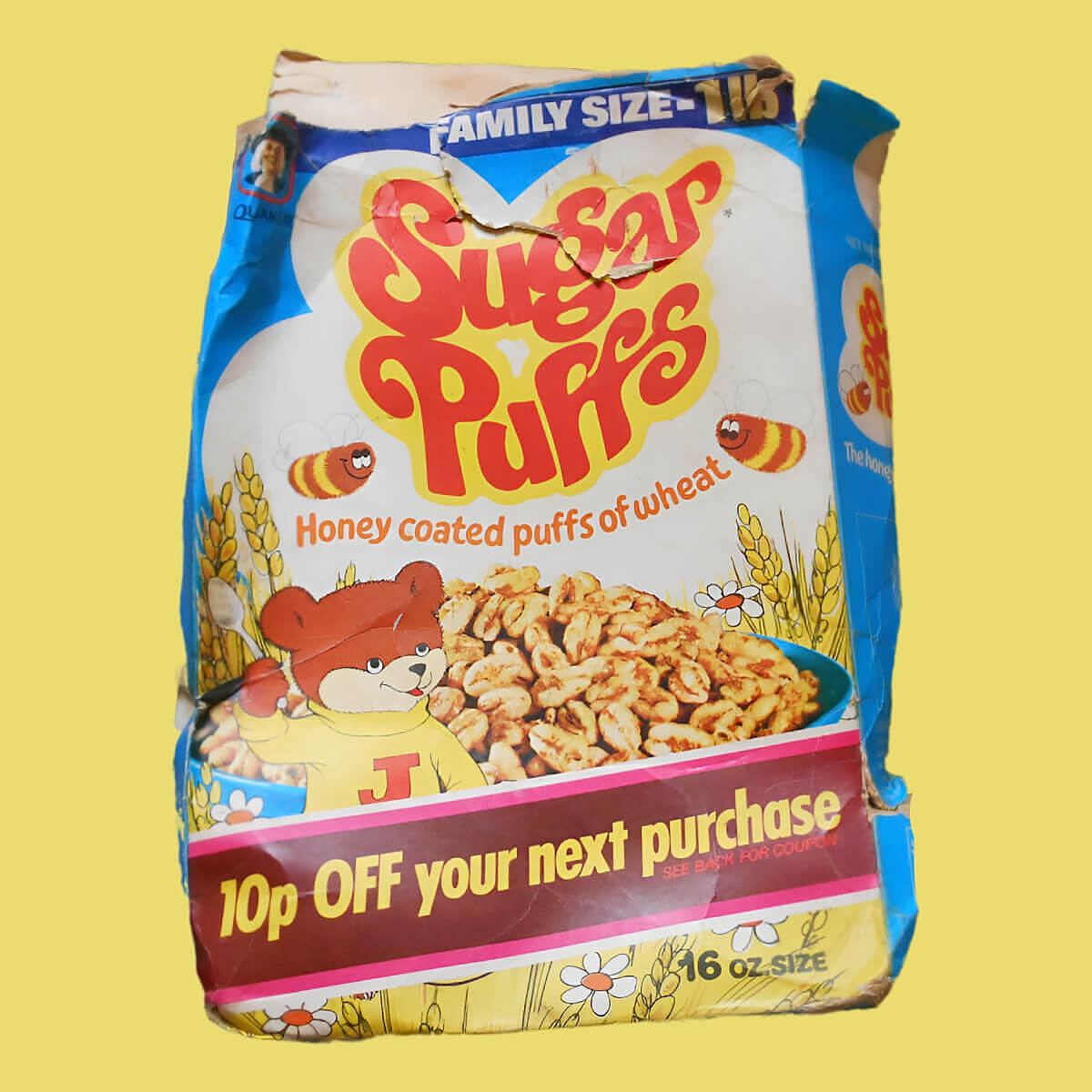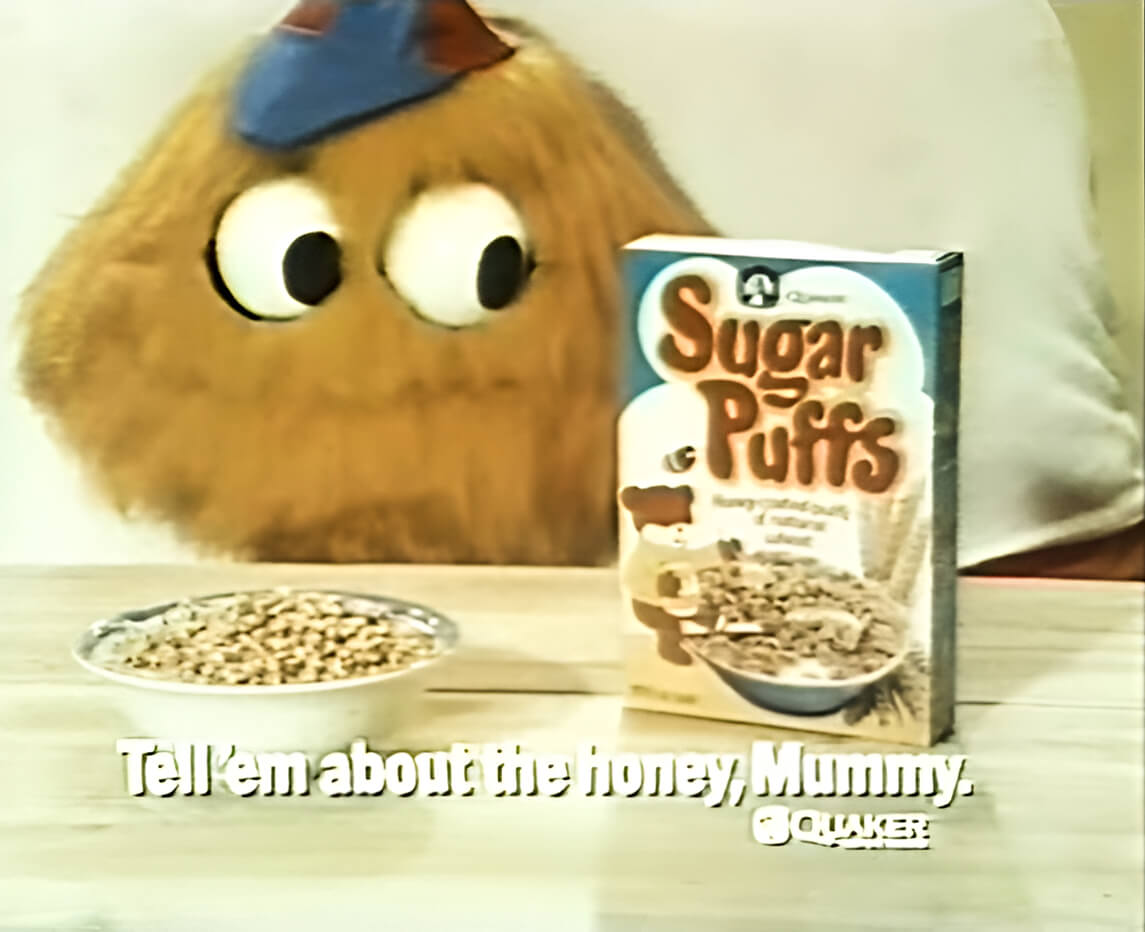Can You Still Buy Sugar Puffs?

Known for their sweet and honeyed flavour, Sugar Puffs were launched in 1957 by Quaker in the United Kingdom. However, there was a major change to the beloved British breakfast cereal in 2014, so the big question is, can you still buy them?
Without wishing to cause confusion, the short answer is yes and no. Let me clarify this. Although you can't buy Sugar Puffs in the original format, you can buy an updated version with a new recipe and a different title.
In 2014, Sugar Puffs were given the new title of Honey Monster Sugar Puffs. However, this was a transitional change, and the name was changed yet again shortly afterwards to the healthier title of Honey Monster Wheat Puffs, omitting the word "sugar" altogether. This cereal has a rather different taste to the product many of us grew-up with.

Sugar Puffs cereal box from the 1990s
Our research shows that the vast majority of people still prefer to call the cereal by its original title. In fact, according to the Ahrefs Keyword Generator, the term "Sugar Puffs" still receives more than 12,000 searches per month, with "Honey Monster Puffs" only receiving around 700 searches.
Current product range
The standard 520g box of Honey Monster Wheat Puffs is currently available to buy from Morrisons, Sainsbury's, Asda and Farm Foods. The product is also available to buy in a 500g bag from Home Bargains.
A limited edition 315g Honey Monster Strawberry Jam cereal was available to buy from Farm Foods and Home Bargains during 2023.
Why were Sugar Puffs re-branded?
The word "sugar" smacks of bad health, and so it was decided to give the brand a healthy makeover, not just with the name but also with the recipe, too. Honey Monster Wheat Puffs contain 8% less sugar and 20% more honey than the original Sugar Puffs. However, after tinkering with the recipe, quite drastically altering the classic taste that many of us loved, inevitably, sales took a nosedive.
This transition marked a new chapter in the history of this beloved breakfast classic. The old saying "If it ain't broke, don't fix it" springs to mind.

This old Sugar Puffs cereal box is from the early 1970s and features Jeremy Bear
What are customers saying about Honey Monster Puffs?
Reviews of Honey Monster Puffs across the web are generally negative. As I write, the average rating on Sainsbury's website is 1.5 out of 5 stars, with one customer remarking "Please can we have our SUGAR PUFFS back, poor sickly imitation".
On Tesco's website, the average rating is slightly better at 2.2 out of 5, with one customer remarking they're "like eating small lumps of cardboard". Tesco Honey Monster Puffs page
On Asda's page featuring Honey Monster Puffs, the average customer rating is poor, at just 2 out of 5.
However, amongst the positive reviews, comments include "Different name but still taste awesome", and "Taste great but not as good as the old recipe."
Who invented Sugar Puffs?
The mastermind behind the creation of Sugar Puffs was William Halliday Davies (1919–2009), the production manager at the Quaker Oats mill located in Southall. While under the ownership of the Quaker Oats Company for many years, the cereal underwent a significant change in 2006 when it was acquired by Big Bear, trading as Honey Monster Foods, headquartered in Leicester.
In 2016, Brecks Company in Selby, North Yorkshire took over production of the cereal.
When did the Honey Monster first appear?
Before 1976, Sugar Puffs had a very different mascot in the form of Jeremy The Bear, who was actually a real female brown bear cub! A cartoon version of Jeremy featured on the front of the cereal box.
This all changed in 1976, when a new TV advert by Quaker (which soon became iconic) featured a funny-looking, big yellow hairy creature, whose shoulders were higher than his head! This was, of course, the beloved Honey Monster. The advert also features the actor Henry McGee, who became a familiar face on The Benny Hill Show during the 1970s.
In the advert, the Honey Monster is obsessed with honey and believes that McGee is his Mummy. The ad starts with McGee announcing, "I'd like to introduce you to Honey Monster". The monster replies "Mummy!", to which McGee replies "I'm not his Mummy".
While describing how he gives Sugar Puffs with milk each morning to the Honey Monster, he replies "Tell 'em about the honey Mummy!", an iconic 70s catchphrase that became a school playground favourite. The monster then proceeds to destroy the kitchen table while exclaiming "I love my honey, I love my Mummy".
This is the first and original Honey Monster TV ad which was shown on ITV, and it's the one I remember the most. The Honey Monster these days is an animated character who not as destructive as the original character, and has different facial features.

Screen capture from the 1976 British TV advert with the iconic slogan "Tell 'em about the honey, Mummy".
This TV advert is from 1991
Which TV character loves a Sugar Puffs sandwich?
Fans of the BBC comedy sci-fi series, Red Dwarf, will know that Dave Lister is fond of Sugar Puff sandwiches. He is played by Craig Charles, who currently hosts The Gadget Show on Channel 5.
Ingredients
The main ingredients in Sugar Puffs include puffed wheat, sugar, honey, and other flavourings. The process of making Sugar Puffs involves puffing the grains, coating them with a sweet mixture of sugar and honey, and then toasting them to achieve that distinctive crunchy texture. The honey not only adds sweetness but also contributes to the cereal's golden colour and unique flavour.
Nutritional aspects
Like any sugary cereal, Honey Monster Wheat Puffs should be enjoyed in moderation. Nonetheless, they are fortified with vitamins and iron, and are a good source of carbohydrates, providing a quick energy boost. However, they are also still relatively high in sugar, so it's essential to balance them with other nutritious elements in your breakfast, such as milk and fruit.
Disclosure: This page contains affiliate links. As an Amazon Associate, I earn from qualifying purchases.

